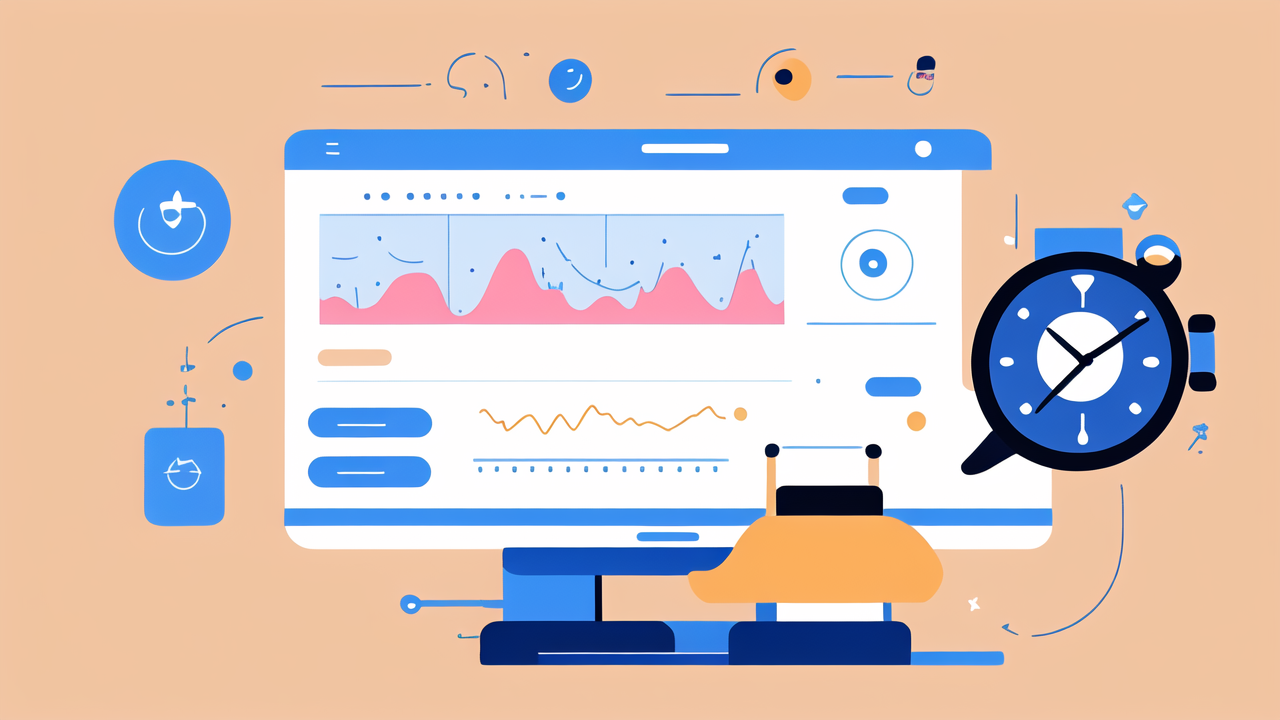Understanding Activity Trackers: What to Look for in a Smart Watch
Key Features of Top Activity Trackers
When on the hunt for an optimal smart watch dedicated to activity tracking, it's crucial to inspect several key features that top-of-the-line trackers have in common. First, a sensitive motion sensor is essential for accurate step count and movement detection. GPS functionality should also be high on the list, providing precise location tracking to map out runs and hikes. Heart rate monitoring is another core element, allowing for a clear picture of your cardiovascular fitness level. Look for water resistance to guarantee your tracker can withstand workouts in all conditions. Additionally, sleep tracking capabilities help paint a comprehensive view of your health by monitoring your rest patterns. Lastly, ensure that the smart watch offers connectivity with various fitness apps, which broadens the scope for detailed exercise analysis and personal goal setting. Prioritizing these features will guide you to a smart watch that doesn't just count your steps but also elevates your fitness journey.

The Importance of Auto Workout Detection
The concept of auto workout detection is a game-changer in the world of activity trackers. This feature automatically senses when you start exercising and initiates tracking without any manual input. It's particularly important because it ensures that all your efforts are recorded, even if you forget to start the session on your smart watch. This automatic detection covers a range of activities, from running and walking to cycling and swimming, making it a versatile addition for athletes of all levels. The convenience of auto workout detection means your fitness data is more comprehensive, helping you analyze your performance and improvement over time. This technology empowers users to focus solely on their workout, trusting the smartwatch to handle the data collection aspect seamlessly.
Customization Options for Fitness Goals
Choosing the right smart watch for activity tracking means looking at customizable features that align with your fitness objectives. A top-notch activity tracker not only records data but allows you to set and adjust goals based on your performance. Customization options can include target step counts, calorie burn objectives, and tailored workout routines. This personalized approach to fitness helps users stay motivated by providing achievable benchmarks, and allows for modifications as fitness levels change. Additionally, many watches offer the ability to track specific kinds of exercise, from swimming to cycling, ensuring that your device meets all your fitness needs.
Comparing Popular Activity Tracking Devices
Pixel Watch 3: An In-Depth Review
The Pixel Watch 3 has emerged as a significant contender in the realm of activity tracking devices. It boasts auto workout detection, allowing users to leap into their fitness routines without manual input on the watch. This seamless integration ensures that every step and heartbeat is captured without effort from the wearer. Moreover, the Pixel Watch updates also include personalized running plans, tailored to the user's abilities and goals, making this smartwatch not just a tool, but a fitness coach on your wrist. The Watch 3 is praised for its accuracy in tracking various workouts and its ease of navigation through the activity data it collects. Whether you're a seasoned athlete or just starting your fitness journey, the Pixel Watch 3 caters to all levels with its adaptable features and reliable performance.
Competitors to the Pixel Watch 3
When assessing the Pixel Watch 3's position in the market, it's crucial to consider its competition. Key rivals include the Apple Watch Series, Samsung Galaxy Watch, Fitbit Versa, and Garmin Forerunner series. These competitors offer their take on activity tracking with unique features. Apple's Watch is renowned for its seamless integration with iOS, while the Galaxy Watch boasts extensive customization. Fitbit's Versa line emphasizes affordability and battery life, and Garmin excels with advanced analytics for athletes. Each brand brings strengths that cater to different user preferences, making it essential to compare them against your personal needs and requirements.
Design and Wearability: Comfort Meets Function
Design Aesthetics and Material Quality
When choosing a smart watch for activity tracking, the design isn't just about looks - it's about merging form with functionality. High-quality materials aren't solely for durability; they play a key role in the overall user experience. A watch crafted from premium, lightweight materials, like titanium or high-grade aluminum, provides both elegance and comfort. Plus, options such as Gorilla Glass or sapphire crystal screens offer scratch resistance without compromising touch sensitivity. These design choices underline that the best smart watches should look as good as they perform, ensuring that they can be worn in a variety of settings - from the gym to the office - without seeming out of place.
The Role of Comfort in Activity Tracking
Comfort plays a pivotal role in the efficacy of activity tracking. An uncomfortable tracker might be discarded before it can prove its worth. It's not just about the feel of the device on the wrist but also about freedom of movement and not having to adjust the tracker continuously. High-quality straps and ergonomic designs that complement the natural shape of the wrist enhance the overall wearability. Additionally, lightweight materials and breathable bands contribute to a more pleasant user experience, ensuring the tracker is barely noticeable during workouts or daily activities. By prioritizing comfort in the design of activity trackers, users are encouraged to wear their devices longer, leading to more consistent data tracking and a more accurate representation of their activity levels.
Battery Life and Connectivity
Battery Longevity in Activity Trackers
When evaluating activity trackers, battery life is a critical factor to consider. The best activity trackers offer extended battery longevity, allowing users to monitor their workouts without the constant need to recharge. Look for devices that can last several days on a single charge, even with regular use. It's also important that the battery does not deplete rapidly when using GPS or playing music, as these are common features used during exercise. Some trackers come with power-saving modes to extend battery life even further, which can be particularly helpful during long events like marathons or hiking trips. Remember, longer battery life means more convenience and less downtime, keeping you focused on your fitness goals.
Syncing with Smartphones and Other Devices
Any quality activity tracker should effortlessly connect with various devices, particularly smartphones. This syncing capability allows for real-time updates of fitness data, enabling users to analyze their performance, set fitness goals, and share achievements through their phone. Most smart watches support both Android and iOS platforms and use Bluetooth or WiFi for connectivity. In addition to basic syncing, some smart watches enrich the user experience with additional features like music control, receiving notifications, and even handling calls directly from the wrist. Optimal synchronization with smartphones and other devices is essential, not just for activity tracking but for the seamless integration of the smart watch into daily life.
Innovative Technology in Activity Tracking
Health Monitoring Features
The world of activity tracking has seen remarkable advancements with the integration of health monitoring features. Today, leading smartwatches do more than just count steps or track distances—they keep a close watch on your overall health. Heart rate monitoring is now a standard, offering users a way to constantly check their pulse and monitor their cardio fitness levels. Some watches have taken it further by incorporating blood oxygen level sensors, which can be vital for identifying potential health concerns. Sleep tracking has also become a fundamental part of health monitoring, enabling users to analyze their sleep patterns and adjust habits for better rest. Stress monitoring, guided breathing exercises, and even electrocardiogram (EKG) capabilities are new additions designed to keep tabs on your well-being. As technology evolves, we can expect these features to become even more sophisticated, providing deeper insights into our health and aiding in early detection of potential issues.
The Future of Activity Tracking Technology
The future of activity tracking technology paints an exciting picture. Advances are likely to focus on even more personalized insights and proactive health management. Imagine smart watches that not only track your current health stats but also predict potential health issues before they arise. We may see enhancements to sensor accuracy for monitoring vital signs such as blood oxygen levels or glucose, without the need for invasive procedures. Integration with AI could offer real-time feedback on workouts, adjusting to our body's signals for optimal performance. Furthermore, seamless connectivity with a range of devices and health platforms could become a standard, offering a holistic view of our wellness. With every stride in technology, future activity trackers will become essential tools for managing health and fitness, and staying ahead in a fast-paced world.
User Experience: Navigating the Smart Watch Interface
Intuitive Design and Ease of Use
When selecting a smart watch for activity tracking, ease of use is crucial for a satisfying user experience. An intuitive design means you can navigate menus and features without confusion or frustration. The best interfaces offer a straightforward, user-friendly approach, allowing you to access your fitness data quickly. Look for watches with clear, legible screens where information is displayed in a simple, organized manner. Touchscreen functionality should be responsive and gestures easy to master, ensuring a smooth interaction with your device during workouts or daily use. Essential indicators like battery life, connectivity status, and activity progress should be visible at a glance, reducing the time spent searching through menus. The goal is to have a seamless experience that enhances, rather than complicates, your fitness journey.
Customizing Your Smart Watch Display
The ability to personalize your smart watch display is crucial to a positive user experience. Smart watches, equipped with activity trackers, offer a variety of options to tailor your screen layout. You can choose which fitness stats to display prominently, such as steps taken, calories burned, or heart rate. Some watches allow for custom wallpapers or themes that resonate with your personal style. Additionally, the option to create shortcuts for your most-used features means that your important fitness data is just a tap away. With these customization capabilities, monitoring your fitness goals becomes both efficient and enjoyable, enhancing your interaction with the smart watch and ensuring that the data you care about is always at your fingertips.
Creating Custom Fitness Plans with Smart Watches
The Value of Personalized Running Plans
For avid runners, a smart watch that crafts personalized running programs can be a game-changer. This customization elevates a routine exercise into a tailored experience that respects your fitness level, goals, and preferences. It allows the watch to track progress against specific objectives, offering real-time feedback and adjustments to keep you on track. This means whether you're preparing for a marathon or just aiming to improve your cardio health, your device can create a plan that slowly ramps up in intensity and complexity as you grow stronger. The ultimate benefit is not just more efficient workouts but also reduced risk of injury, as the plans are designed to increase demands on the body in a sensible manner.
Integrating Fitness Plans with Lifestyle
Smart watches have become more than just fitness tools. They are now integral in weaving fitness seamlessly into our daily lives. By allowing users to integrate their custom fitness plans with their lifestyle, activity trackers enable a holistic approach to health and well-being. For example, a smart watch can remind you to stand up and stretch during long hours at work, or nudge you to hit your daily step goal. These plans can be tailored to sync with your calendar, alerting you to planned workout times amidst your meetings. They help in tracking hydration, prompting you to drink water, and monitoring sleep patterns to ensure you're well-rested for the day ahead. This level of integration makes the pursuit of fitness virtually effortless and more attainable within the intricacies of everyday living.
Final Thoughts: Choosing Your Ideal Activity Tracker
What Sets the Best Trackers Apart
When it comes to making a final pick for an activity tracker, distinguishing the best from the rest comes down to a few standout features. Superior trackers offer enhanced accuracy in monitoring both routine activities and workouts. They have comprehensive health data analysis, like heart rate monitoring and sleep tracking, which provide meaningful insights for fitness improvement. Additionally, they often feature robust GPS capabilities for precise location tracking during outdoor exercises. Another defining factor is the availability of a wide range of workout modes that cater to various sports and training regimes. Moreover, a top tracker should boast strong compatibility with different ecosystems, making it easier to connect with other smart devices and apps. Ultimately, these elements contribute to a holistic and enriching fitness tracking experience, setting the best trackers apart from the competition.
Making an Informed Decision
To make an informed decision when choosing your ideal activity tracker, consider the following points. Examine the device's core functions, like step counting, heart rate monitoring, and sleep tracking. Assess extra features that may enhance your daily routine, such as auto workout detection or unique customization options for fitness goals. Reflect on the design, ensuring that the watch is comfortable for all-day wear and suits your style preferences. Battery life is crucial too; opt for a watch that can keep up with your active lifestyle without frequent charging. Lastly, consider the ease of syncing with your smartphone and other devices for a seamless experience. Take the time to compare models, read reviews, and think about how the tracker fits with your activities. By doing thorough research, you're more likely to find an activity tracker that perfectly aligns with your needs and preferences.




Leave a comment
This site is protected by hCaptcha and the hCaptcha Privacy Policy and Terms of Service apply.